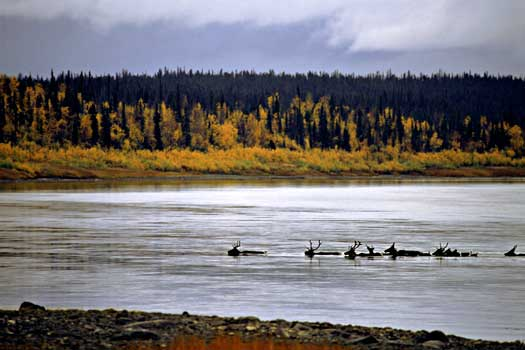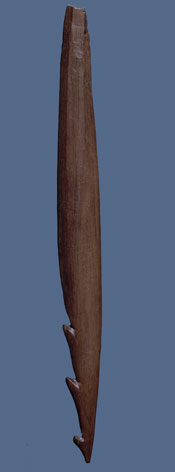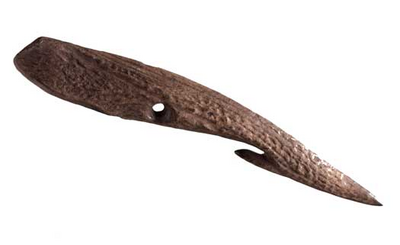Hunting in water
Large-toothed harpoons are known from the Maglemosian period. These are hunting tools with large barbs carved out of bone. The harpoons were mainly intended for hunting swimming elk and red deer. Elk ate aquatic plants in the extensive water areas. The hunters also operated near the lakes. With the help of dogs they could drive the elk into the water and bring down the swimming animals with harpoons. The harpoon could also be attached to a line so that the hunter was able to hold the injured animal close to his boat. It was then possible to give the animal a blow with a club or its vital organs could be pierced with arrowheads or spears. There are several advantages with this kind of hunting. Apart from the fact that the animals are vulnerable in water, they are also so preoccupied trying to hold their heads above water that they do not get chance to kick and butt. This form of hunting is very effective. It is in fact so effective that in modern times it has been banned in most of Canada and the north of the USA as it is considered unsporting! Finds of later harpoon heads from the Kongemose and Ertebølle periods on Zealand indicate that the hunting of swimming wild animals continued later on. Some animals escaped their pursuers, including the wounded elk from Tåderup.



